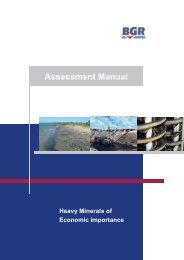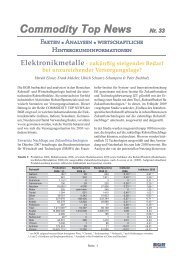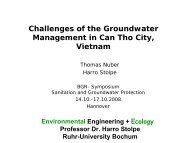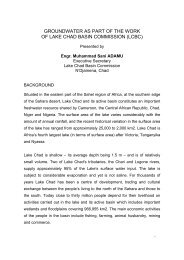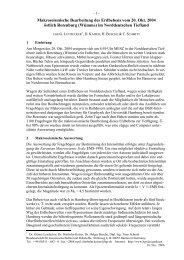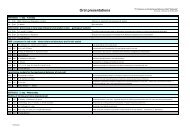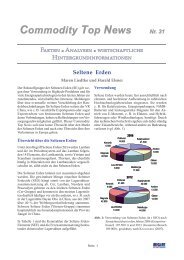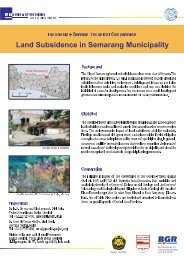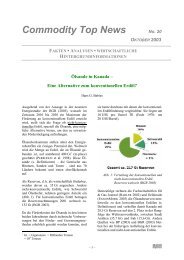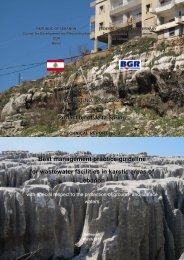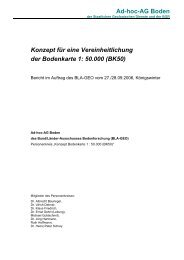THE SMOOTH SOUNDING GRAPH. A Manual for Field Work ... - BGR
THE SMOOTH SOUNDING GRAPH. A Manual for Field Work ... - BGR
THE SMOOTH SOUNDING GRAPH. A Manual for Field Work ... - BGR
You also want an ePaper? Increase the reach of your titles
YUMPU automatically turns print PDFs into web optimized ePapers that Google loves.
2.2.4. Crossing a ditch (Fig.26/29)<br />
44<br />
The importance of observing the current density between M and N may be<br />
demonstrated now in the case of a good conducting thin surface layer (ρ1)<br />
underlain by a second layer of higher resistivity (ρ2 > ρ1). This very often<br />
happens in nature, f.i. sand with a thin clayey overburden. We assume<br />
that the current electrode A is crossing a dry ditch cut through the clay as<br />
shown in Fig.29a.<br />
When the electrode A reaches a position just be<strong>for</strong>e the ditch, we observe<br />
a high, but a quite normal current density due to the clay cover. But when<br />
the electrode is just behind the ditch (A’) the current lines within the clay<br />
are interrupted. The current has to pass the second layer underneath the<br />
ditch (dotted current lines).<br />
The current density between the potential electrodes will be reduced and<br />
the ρa-point drops out of the sounding graph downwards.<br />
Our conclusion is: when a good conductor (wire-mesh-fence) appears as a<br />
disturbance, the point of a sounding curve drops out upward, when a bad<br />
conductor appears (ditch cutting the first layer) the point drops out<br />
downwards. This is due to the definition of the apparent resistivity. The<br />
apparent resistivity doesn’t deal with the distribution of resistivity in the<br />
underground, but with the current density at the potential electrodes be-<br />
tween M and N.<br />
The current density j is the parameter which is fundamental at all consid-<br />
erations in field works. One has to think in current densities, in order to<br />
get the right conclusions out of the possible disturbances.<br />
2.2.5. Water-pipe parallel to the measuring lay-out (Fig.26/30)<br />
The effect of a water-pipe buried parallel to the measuring lay-out is simi-<br />
lar to that of a wire-mesh-fence, but much more dangerous <strong>for</strong> interpreta-<br />
tion if both the pipe and L/2-line are running close to each other along a<br />
road or path up to the end of the lay-out. We look at the electrode B in<br />
Fig.26 and 30.



